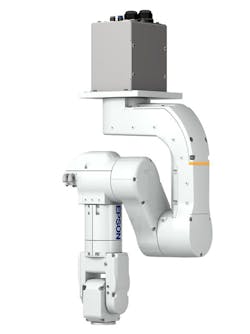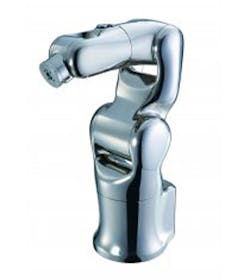As technology advances through each industrial age, jobs—and job titles—have transitioned to reflect the new skills required. Some changes may be evolutionary, as existing workers adapt to the labor-saving capabilities of new technologies. Other changes are revolutionary, leading to brand-new industries and previously non-existent jobs.
These jobs and their requirements are difficult to anticipate as they arise from human ingenuity that leads to unexpected ways to implement rapid technology advances. Even two decades ago, few could have anticipated the dramatic numbers of jobs related to cell phones, mobile apps, social media, internet providers, and cloud-based services—or the specific skills needed for those segments to succeed. Similarly, tasks that can be automated with advanced technologies, such as robots, are giving rise to new careers and industries across the spectrum of human endeavors, from healthcare to transportation and hospitality to manufacturing.
Job titles evolve with technology. As automation increases, industry requires a higher level of skill to find solutions to keep production moving. The Flexion N2 has the unique ability to fold through itself, versus around itself. This reduces the number of intermediate points and shortens cycle times. This design reduces required workspace area by up to 40% versus standard 6-Axis robots.
The challenge has always been to ensure that the skills of human workers evolve along with the technologies. But in the automation age, the widening skills gap threatens to slow companies’ ability to create and adopt automation technologies. Today’s workers, as well as those who will enter the workforce in the upcoming decades, must be better trained and prepared to work with automation. For those who are, the rewards are often better-paying jobs, with significant benefits and opportunities for advancement.
Growth in New Job Titles, and the Law of Supply and Demand
In each decade since 1980, employment growth has been greater in occupations with more new job titles, according to a study by MIT economists. From 1980 to 2007, total US employment grew by 17.5%, with just over half (8.8%) of this growth coming from additional employment in occupations with new job titles. For example, in 2000 about 70% of the workers employed as computer software developers (an occupation employing one million people at the time) held new job titles. The study concluded that occupations that have 10% more new job titles at the beginning of the decade grow 5.1% faster during those 10 years.
We’re seeing a similar trend in the automation age. In almost every industry segment, automation-age workers are being required to perform tasks using rapidly advancing technology, resulting in new jobs and job titles. While robot programmers, operators, and repair technicians have become more common in manufacturing, those job titles are now appearing in a range of newly automated industries, from healthcare to hospitality and retail.
New job titles for traditional roles such as machinists, welders, coders, and technicians often incorporate the term “mechatronics” to reflect the need for technical training that includes systems design, as well as mechanics and electronics. Other new and upcoming jobs required across industries include:
- Computer vision and machine algorithm designers
- Robotics, vision systems, and motion control engineers
- Industrial network integration engineers
- Cybersecurity experts
- Predictive equipment analytics specialists
- Industrial safety experts
- IoT and data analysts
- Material movement controls engineers
Of course, automation equipment manufacturers and integrators need an ever-increasing number of robot designers and application developers. In addition, this will include industrial, electrical, software, and mechanical engineers and technicians with specific expertise in PLC controls and mechatronics, networking, and human-robot interfaces.
Automation in clean environments prevents the hazards of foreign matter from manual tasks, human error, and operator exposure. Denso contributes to automation in medical device/medical product manufacturing processes and drug preparation with the VS-050-S2. Due to increased production technology like this provides, testing of blood samples can be done quickly and affordably. A testing facility might see a shift from hiring medical techs to hiring medical techs and mechanical technicians as technology advances.
With all of this growth, the rules of supply and demand are in play in today’s automated workplaces. A recent study reveals that 80% of manufacturing executives are willing to pay more than the market rate to fill positions impacted by the skills gap. Nevertheless, 60% of those positions remain unfilled. This is especially surprising given the wage and benefits advantages of manufacturing jobs. According to data from the Bureau of Economic Analysis and Bureau of Labor Statistics, the average U.S. manufacturing worker earned $81,289 in 2015, including pay and benefits (compared to $63,830 for the average worker in all nonfarm industries).
According to the Kaiser Family Foundation, 92% of manufacturing employees were eligible for health insurance benefits in 2015, which is significantly higher than the 79% average for all firms. Despite that, manufacturing executives reported an average of 94 days to recruit engineering and research employees and an average of 70 days to recruit skilled production workers.
Productivity and the Distinction Between Jobs and Tasks
Automation offers efficiencies that bolster new companies and technology advances, increasing productivity, and generating profits that bring in additional investment—and jobs. We’ve seen this happen through every age of the Industrial Revolution, and there’s no reason to believe that won’t continue to be the case. A recent paper calculates that robotics has increased labor productivity by 0.35% annually. That’s about the same amount attributed to the steam engine, described as a classic example of a “general-purpose technology” that has a pervasive, longstanding impact across multiple dissimilar industries. As we look at automation, we also need to look at multiple dissimilar industries that include but aren’t limited to manufacturing.
Ongoing studies on the impact of automation (specifically robots) on jobs draw widely varying and often conflicting conclusions. These studies typically don’t compare what potential job losses would have been without automation, however. When businesses are forced to shutter because they can’t compete, the loss of jobs can be far-reaching, rippling throughout the supply chain, the community, and related businesses and services.
But multiple studies continue to show no relationship between a country’s use of robots and loss of manufacturing jobs, and we continue to see unemployment falling with the growth of robot sales. Looking only at U.S. manufacturing jobs post-recession, the number of employees has increased along with record robot shipments. According to US Bureau of Labor statistics, from January 2010 through January 2017, manufacturing jobs in the US grew from 11,460,000 to 12,354,000—an increase of 894,000 jobs.
What is often left out of these studies is that the most important indicator of economic growth is productivity. Robert D. Atkinson, president of the Information Technology and Innovation Foundation (ITIF), recently released a statement about low productivity in the U.S. based on data from the U.S. Bureau of Labor Statistics (BLS).
“Economists all agree that raising productivity is the key to improving people’s living standards, yet to the extent it comes up at all, it is incorrectly portrayed as a boogeyman that kills jobs and exacerbates inequality,” Atkinson said. He goes on to describe a need for a strategy that provides “greater support for research and development for better tools of production, and focused follow-through to ensure firms adopt them more rapidly.” Automation provides those tools.
While robots don’t cause net job losses, they do change the type of work and the skills required, driving new jobs and shifting existing jobs toward higher-value tasks. This distinction between jobs and tasks is critical.
David Autor, a professor of economics at MIT, noted that automating a subset of tasks increases the economic value of the remaining tasks. When ATMs became widely deployed, for example, the number of tellers per bank branch initially fell by about a third. However, Banks quickly discovered that ATMs made it cheaper to open new branches, and the number of bank branches increased by about 40% in the same time period, with a net result of more branches and more bank employees.
Since routine cash-handling tasks were managed by technology, employees took on more cognitively demanding jobs in relationship banking and investment and credit services. This is just one example of technology that made more jobs, with different titles, and higher value.
Steve Cousins, CEO of Savioke, a supplier of delivery robots for hospitality and other industries, has also seen this change—and it’s fundamental to the success of his fast-growing company. Within any given job there are numerous tasks, some of which are mundane and relatively low-value to the organization. By allowing a robot to perform those mundane tasks, the human worker’s job becomes focused on higher-value tasks that ultimately increase companies’ productivity. That increase in productivity leads to profits that can be reinvested into new or expanded business opportunities, which often require additional employees.
At Amazon, innovation means continuously looking for new ways to fuel the fast delivery and great Prime experience. One of the ways the company innovates on behalf of its customers is through automation across its customer fulfillment network. Automation within Amazon operations works collaboratively alongside full-time employees to make jobs more efficient. In 20 fulfillment centers across the U.S., Amazon’s robotics drive units pick up entire shelves of products and bring them to employees who are located at ergonomic work stations. With the help of Amazon Robotics, what used to take hours now takes minutes.
As a result, skilled employees are able to focus on more sophisticated tasks. Associates have opportunities to move into roles as innovation process assistants, for instance—testing new technologies developed for Amazon fulfillment centers and working with engineers and operations managers to train associates.
Overall, the company continues to see significant job creation as it automates. When Amazon Robotics was deployed in 2014, the company had more than 45,000 full- time employees. Today, there are more than 90,000 full-time employees across its U.S. Customer Fulfillment network, with a drive to hire more than 100,000 new, full-time employees across the company in the coming months. The new positions require a range of experience, education, and skill levels, from engineers and software developers to entry-level positions with on-the-job training.
No industry has adopted automation as extensively as the automotive industry. At General Motors, Industry 4.0 is the mantra for continued profitability. During its recent period of increased profitability from 2012 to 2016, GM grew from 80,000 US employees to 105,000, while increasing the number of new U.S. robot applications by approximately 10,000. The rise in manufacturing jobs is driven by product demand, but other areas of rising employment include areas such as IT insourcing and positions in advanced technologies such as future vehicles.
Overall, technology has shown to increase production that in turn increases profits, jobs, and new positions. This correlation is found in the amount—and types—of evolving job titles over the years in successfully growing industries. If your company’s career page shows new jobs and evolving positions, it might serve as an indicator of job security. In addition, if you are educated to what jobs are being offered and how they are changing, you will know what skills you’ll need to progress within your company.



